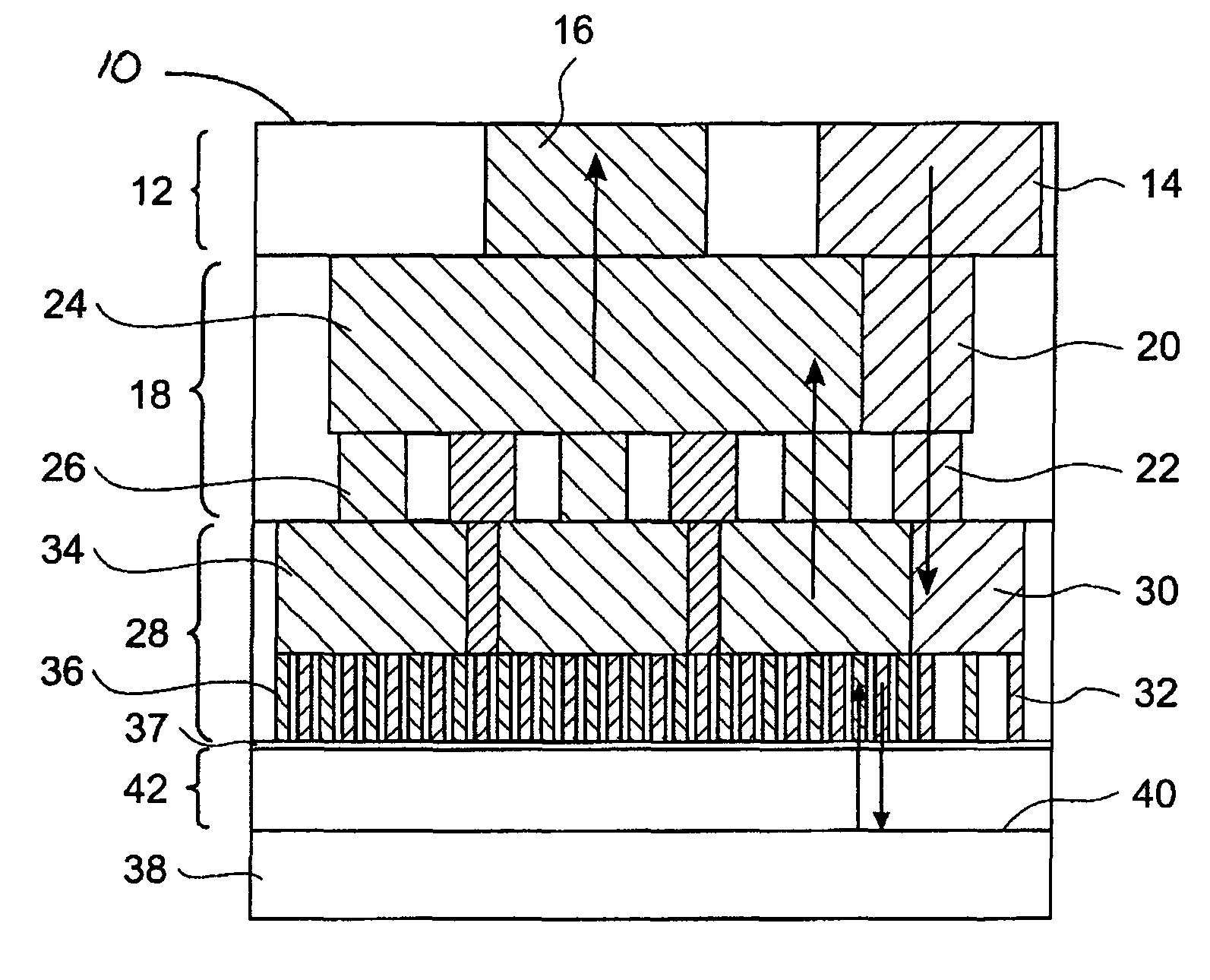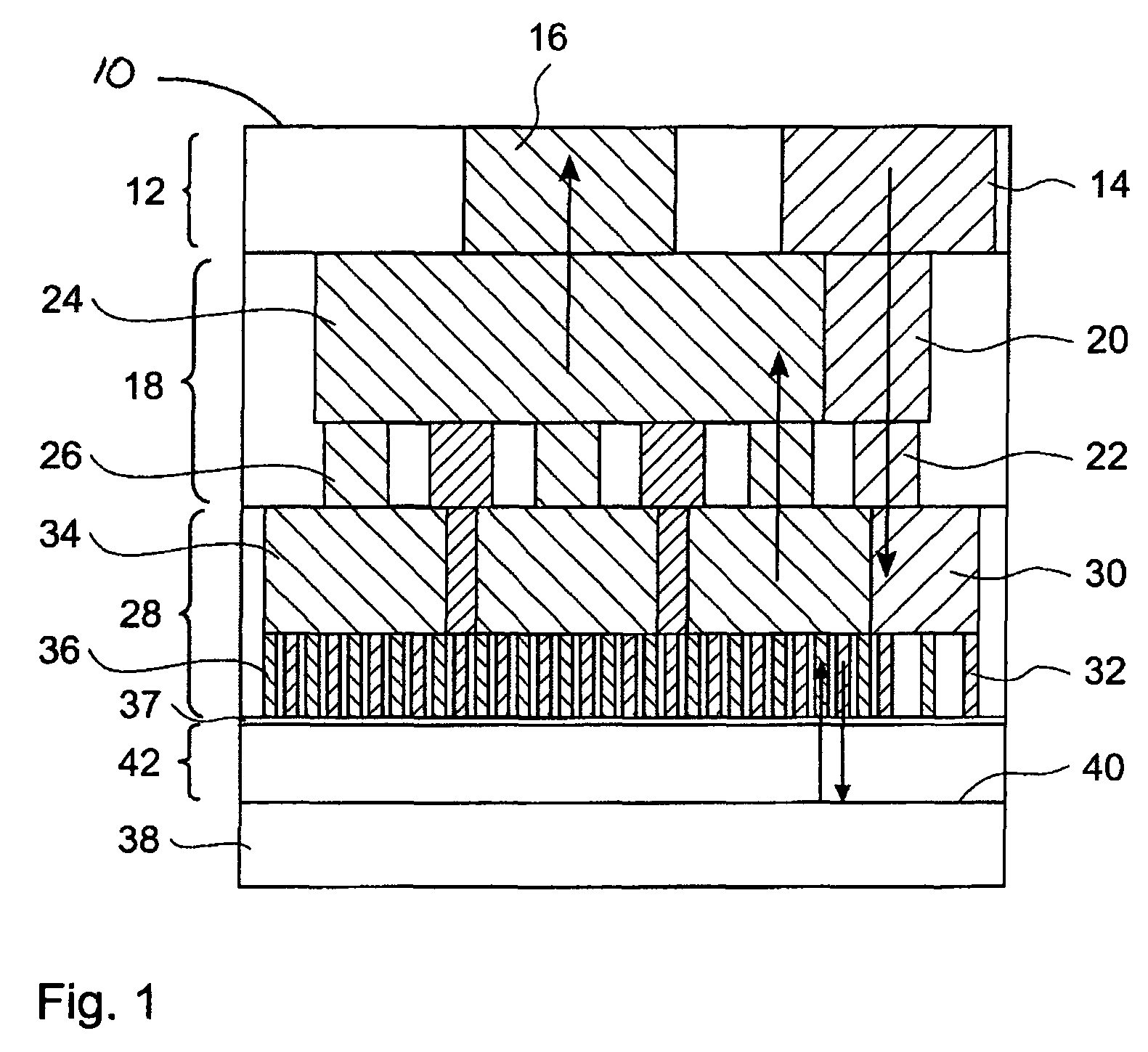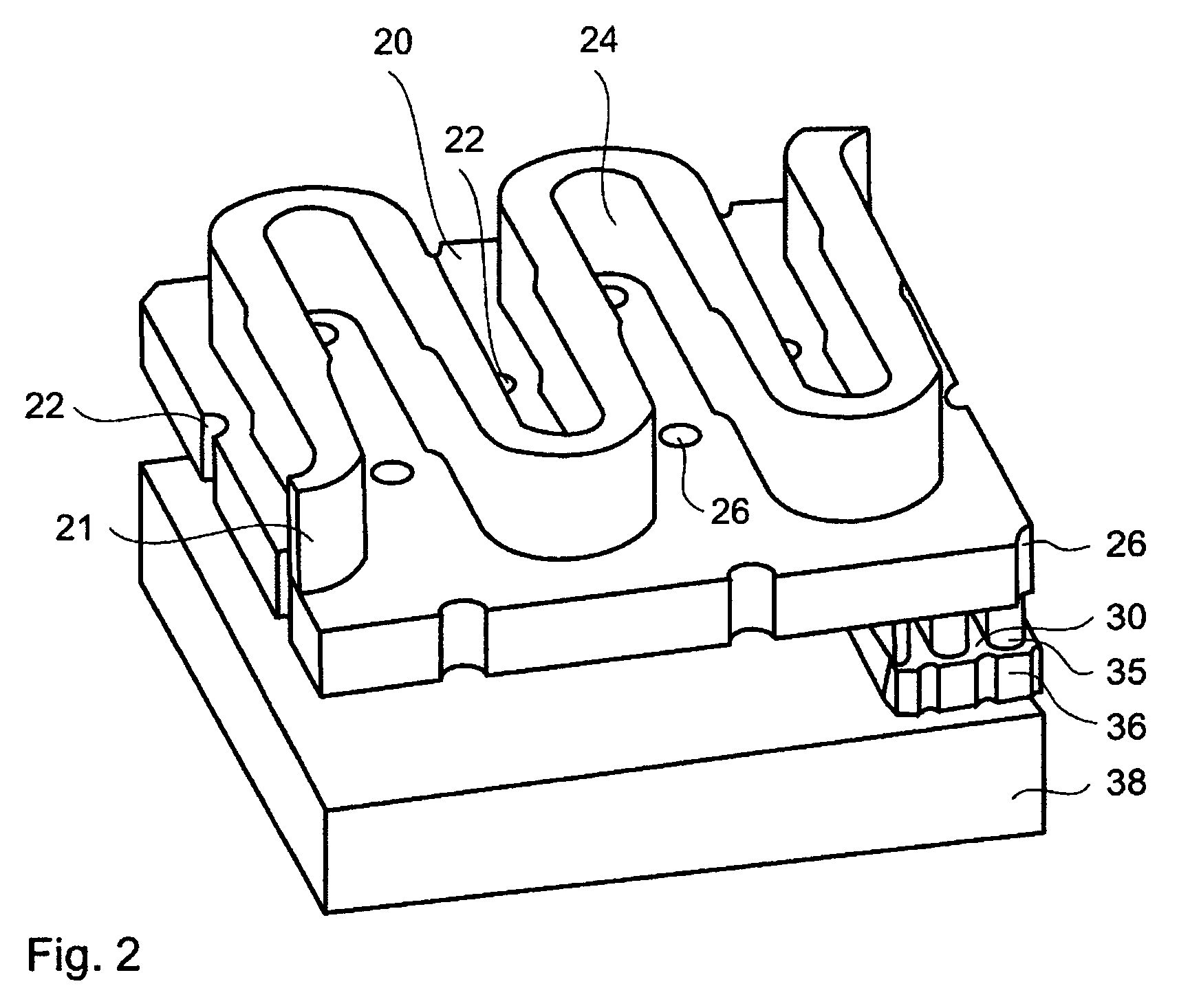Cooling device
a cooling device and cooling chamber technology, applied in the direction of cooling/ventilation/heating modification, semiconductor device details, semiconductor/solid-state device details, etc., can solve the problems of mutual cancellation of flow speed, reducing heat transfer performance, and reducing the flow field of the impeding jet, so as to minimise the pressure drop across the impeding cooler and minimise the effect of pressure drop
- Summary
- Abstract
- Description
- Claims
- Application Information
AI Technical Summary
Benefits of technology
Problems solved by technology
Method used
Image
Examples
Embodiment Construction
[0063]FIG. 1 shows a cross-sectional view of a portion of an impingement cooler 10 of the present invention. A third level 12 of the impingement cooler 10, also known as an interface layer, comprises a third level inlet 14 and a third level outlet 16. Adjacent to the third level 12 is a second level 18, also known as a manifold layer, comprising a second level manifold input channel 20 connected to several second level inlets 22, and a second level manifold output channel 24 connected to several second level outlets 26. Adjacent to the second level 18 is a first level 28, also known as a jet layer or terminal level, comprising a first level input channel 30 connected to several jet nozzles or first level inlets 32, and a first level output channel 34 connected to several output nozzles or first level outlets 36. The first level inlets 32 and the first level outlets 36 terminate at a jet plate 37. Preferably, the first level inlets 32 and the first level outlets 36 are parallel. A ba...
PUM
 Login to View More
Login to View More Abstract
Description
Claims
Application Information
 Login to View More
Login to View More - R&D
- Intellectual Property
- Life Sciences
- Materials
- Tech Scout
- Unparalleled Data Quality
- Higher Quality Content
- 60% Fewer Hallucinations
Browse by: Latest US Patents, China's latest patents, Technical Efficacy Thesaurus, Application Domain, Technology Topic, Popular Technical Reports.
© 2025 PatSnap. All rights reserved.Legal|Privacy policy|Modern Slavery Act Transparency Statement|Sitemap|About US| Contact US: help@patsnap.com



